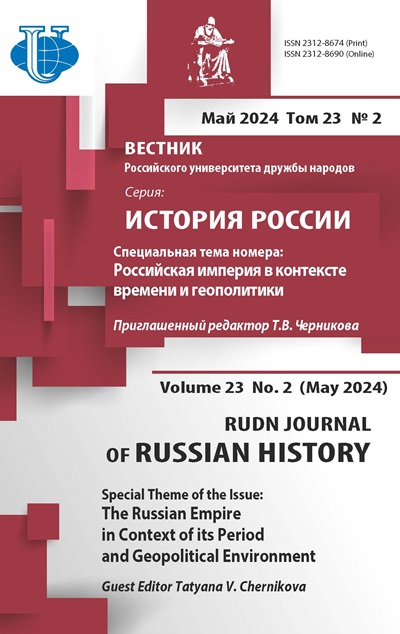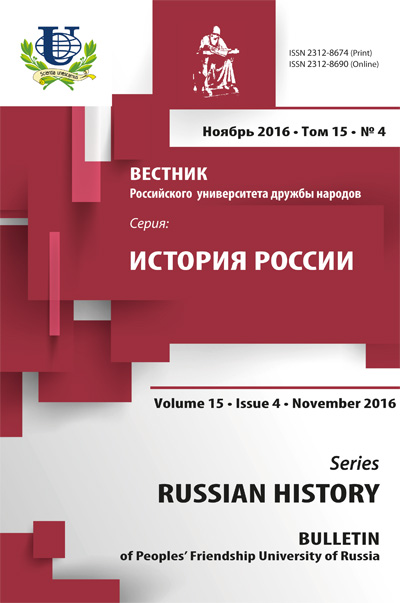PROTEST OF THE ORENBURG’S POPULATION AGAINST THE AGRARIAN AND FOOD POLICY AT THE TURN OF 1920-1930-IES: EXPERIENCE OF THE CONTENT ANALYSIS OF THE OGPU SUMMARIES
- Authors: Kalduzova V.A.1
-
Affiliations:
- Oreburg State Padagogical University
- Issue: Vol 15, No 4 (2016)
- Pages: 18-28
- Section: ARTICLES
- URL: https://journals.rudn.ru/russian-history/article/view/15293
Cite item
Full text / tables, figures
Abstract
The article is devoted to the study of the influence of agro-food transformation on the level of social stability in the early period of industrialization. The subject of the study was the passive protest of the population. On the basis of the frequency content analysis of the summaries of the Joint State Political Administration (JSPA) as a single, rather structured and representative source, there are brought out peculiarities of the protest of the urban and rural population of the Orenburg district which was not directly reflected in the official documents. The author notes that the social-economic changes carried out in the late 1920s transformed the living conditions of the rural and urban society, and led to the changes in the system of food provision. The population reaction was manifested in the growth of passive protest against these measures. In the conclusion the author marks the unevenness of the activity of social groups among the rural and urban population.The main cause of the peasant protest was the tax policy of the Soviet state. The strengthening of grievances was observed during the campaign for the procurement of bread. The author notes the initiate changes in the traditional mentality of the peasantry, the radical growth of this segment of the population. The discontent among the urban population was caused by a low quality and insufficient assortment of food products. The reduction of the number of citizens’ radical statements took place along with the growth of this indicator among the rural population. The author comes to the conclusion that such a response to the increasing of the modernization processes in the country and harsh methods of the agrarian and food policy implementation was appropriate. The system of codification developed and used in the article can be applied for the analysis of the JSPA reports and the study of the protest in the second half of the 1920s.
About the authors
Violetta Aleksandrovna Kalduzova
Oreburg State Padagogical University
Email: ka-violett@mail.ru
Sovetskaya St., 19, Orenburg, Russia, 460000
References
















